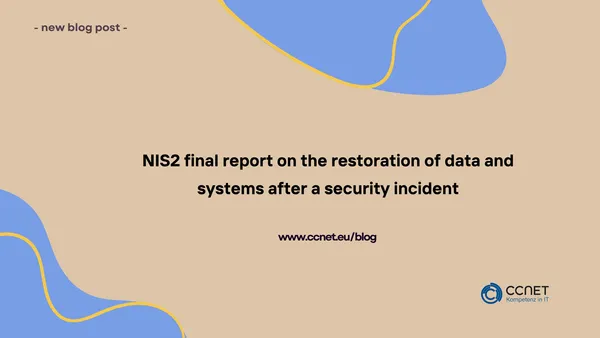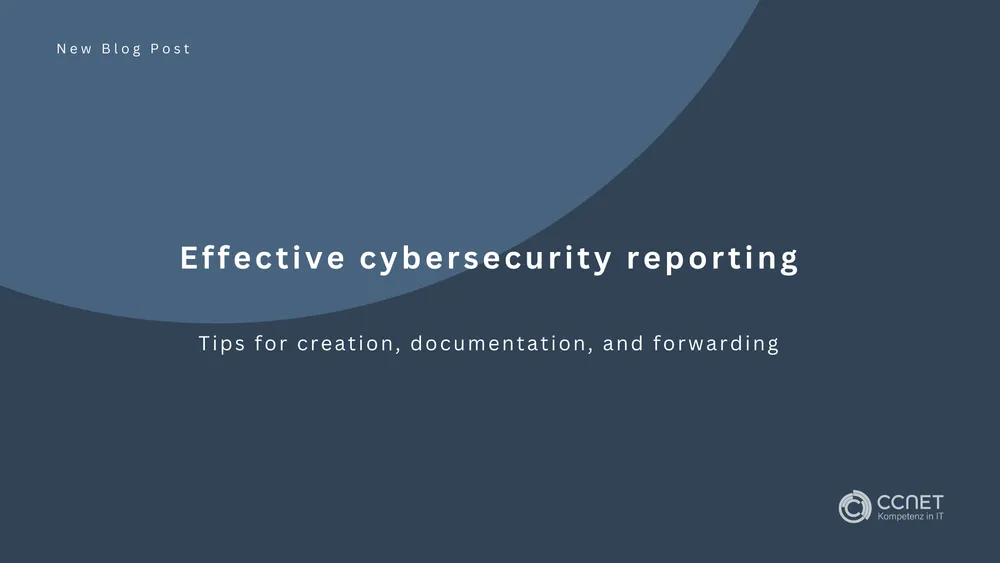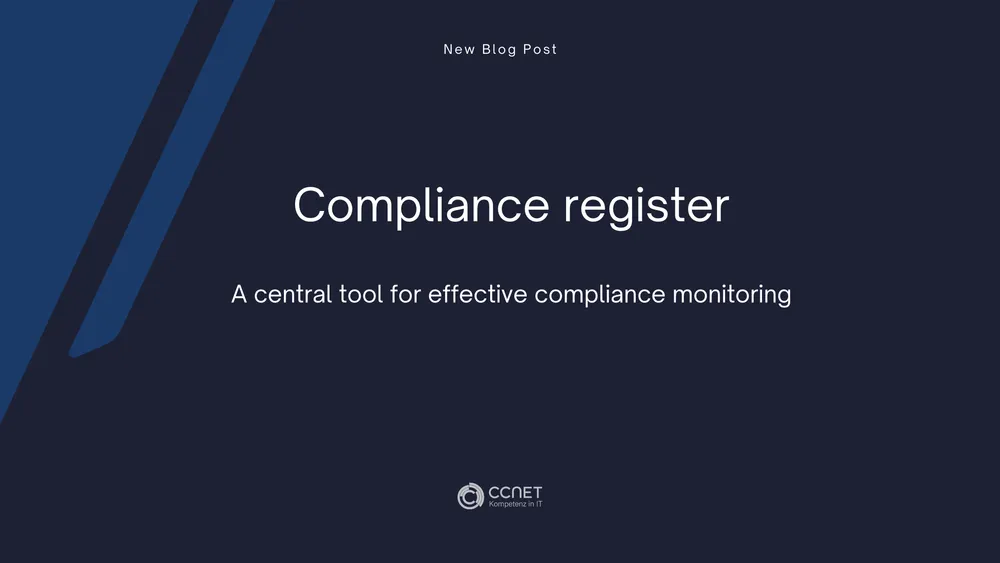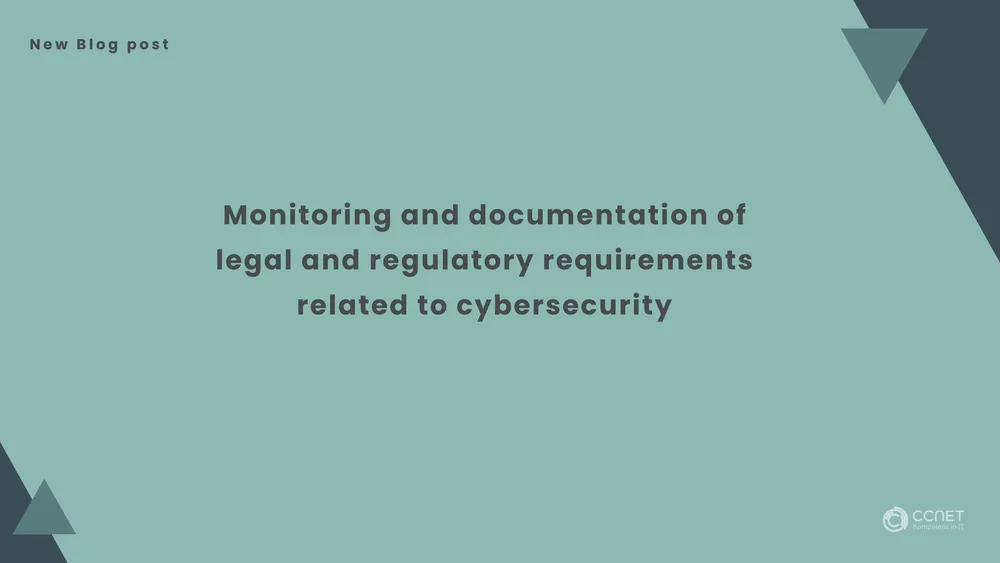
CCNet
Mar 24, 2025 • 3 min read

NIS2 final report on the restoration of data and systems after a security incident
NIS2 Final Report on the Recovery of Data and Systems After a Security Incident
Report Date: [Date]
Responsible Person: [Name of the IT Security Officer]
Incident Date: [Date of the Security Incident]
Recovery Period: [Duration of Recovery]
Affected Systems: [List of Affected Systems]
Affected Data: [Type of Affected Data]
This report documents the recovery of the IT systems and data of a company following a security incident that occurred on [Date]. The report includes a detailed description of the incident, the recovery measures taken, the assessment of results, and recommendations for future improvements.
Summary of the Security Incident
On [Date], a security incident was detected, leading to a disruption of the following critical systems:
- System 1: [Description]
- System 2: [Description]
- System 3: [Description]
The cause of the incident was attributed to [Cause of the Incident, e.g., phishing attack, failed update].
Recovery Process
Immediate Actions After the Incident
- Isolation of Affected Systems: The affected systems were immediately disconnected from the network to prevent further spread.
- Damage Assessment: A quick analysis revealed that [Number] servers and [Number] databases were affected. Critical business functions were prioritized.
Data Recovery
- Backup Selection: The backup from [Date of the Backup] was selected, as it contained the latest undamaged data.
- Restoration of Databases: The affected databases were successfully restored from the backup without data loss.
- Data Integrity Verification: All restored records were checked for their integrity.
System Recovery
- Restoration of Operating Systems and Applications: The affected servers were restored from system images, and necessary patches were installed.
- Configuration Review: All system configurations were reviewed and adjusted to meet the latest security standards.
Validation of Recovery
- Integrity Check: All restored systems and data were validated. No anomalies were detected.
- User Testing: Key users tested the functionality and confirmed the complete restoration of the data.
Outcome Assessment
Recovery Time Frame
- Planned Recovery Time: [Planned Time, e.g., 12 hours]
- Actual Recovery Time: [Actual Time Taken, e.g., 10 hours]
Success of Recovery
- Recovery Status: All affected systems and data were successfully restored.
- Business Operations: Regular business operations resumed on [Date of Resumption, e.g., the next business day].
Identified Weaknesses
- Weakness 1: [Description, e.g., inadequate network segmentation]
- Weakness 2: [Description, e.g., delayed alerting]
Post-Processing and Recommendations
Implementation of Improvements
- Measure 1: [Description, e.g., implementation of additional network segments]
- Measure 2: [Description, e.g., optimization of alerting processes]
Long-term Improvements
- Recommendation 1: [Description, e.g., introduction of an additional backup system at a third location]
- Recommendation 2: [Description, e.g., regular training for IT staff on current threats]
Lessons Learned
Successful Aspects of Recovery
- Effective Use of Backups: The regular backups enabled quick and complete recovery.
- Coordination of Teams: The collaboration between IT, management, and departments went smoothly.
Areas for Improvement
- Communication: Internal communication can be optimized to better inform all parties involved.
- System Hardening: Some systems should be further hardened to minimize vulnerabilities.
Conclusion
The recovery following the security incident on [Date] was successful. Business operations were quickly resumed without data loss. The identified weaknesses have been documented, and improvement measures have been initiated.
Appendix
Appendix A: Detailed Recovery Process (Step-by-Step Protocol)
Appendix B: Overview of Restored Systems and Data
Appendix C: List of Participants and Their Roles
Appendix D: Recommendations for Future Prevention of Similar Incidents
Conclusion
The security incident on [date] demonstrated that the company's emergency and recovery measures are effective, enabling a quick restoration of operations without data loss. Detailed preparation and regular backups facilitated a swift return to normal operations. Weaknesses in network segmentation and alerting were identified and addressed with appropriate measures to increase resilience against future incidents. With clear recommendations for long-term improvements and lessons learned, the company is better positioned to handle similar incidents in the future.


